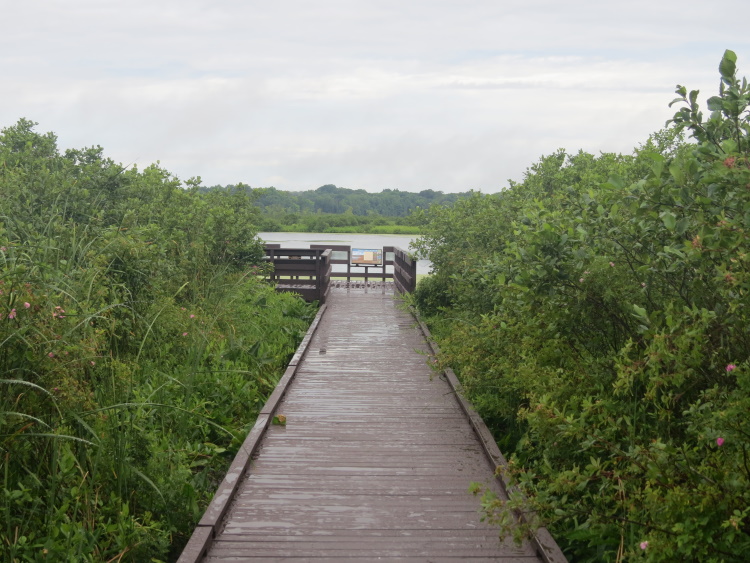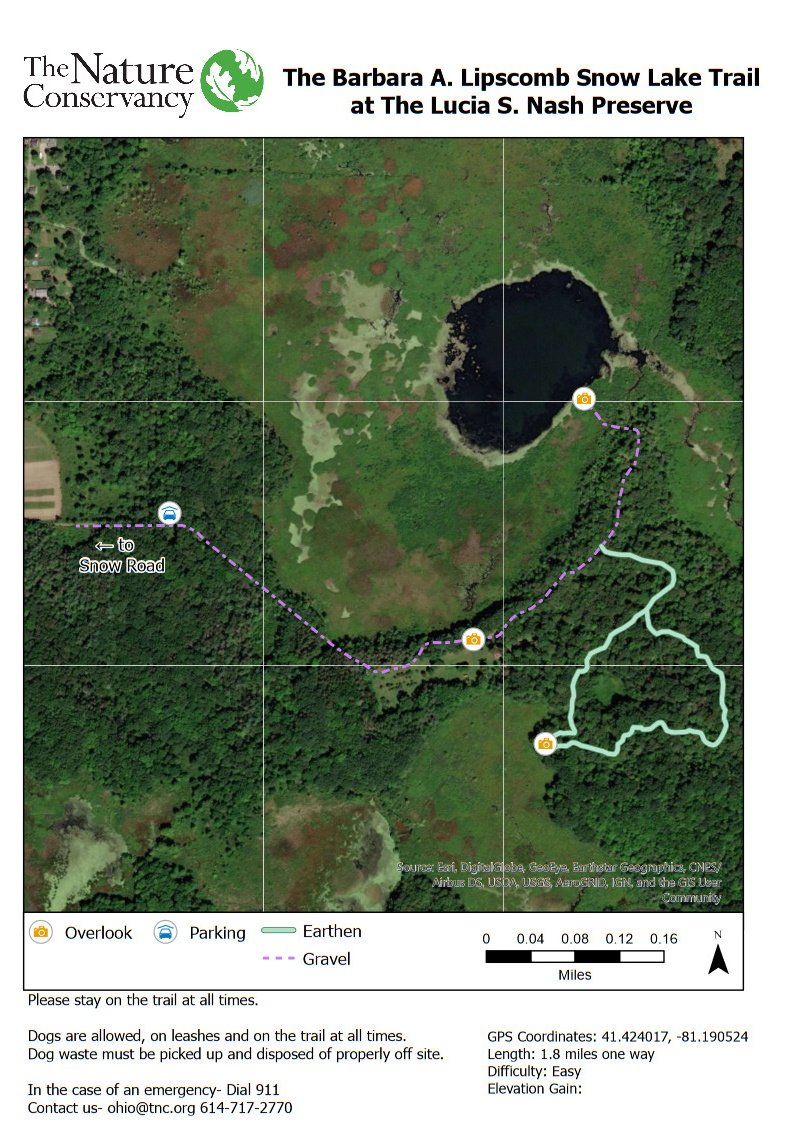Lucia S. Nash Preserve

Lucia S. Nash Preserve
Snow Road Burton, Ohio 44021
Official WebsiteLucia S. Nash Preserve map
Also, see all the hotspots at:
Cuyahoga River-Upper Important Bird Area
Tips for Birding
The 0.5-mile entry road is a narrow compacted gravel road with two pull-out areas. There is a large grassy field to the north and woodland edge habitat to the south.
The main parking lot is gravel. The trail is compacted sand and well-maintained. The “Woodland Loop” is dirt and more narrow. The boardwalk and Snow Lake Overlook is a prime birding spot. There are a lot of bugs. Bring bug spray!
About this Location
The 650-acre Lucia S. Nash Preserve, located in Geauga County, includes Snow Lake, a small kettle lake surrounded by emergent marsh, sedge meadow, and shrub swamp. The low hills around the lake support upland forest with scattered vernal pools and swamp forests. The preserve also protects the only remaining old-growth white pine boreal fen in Ohio.
Lucia S. Nash Preserve, formerly known as White Pine Bog, is part of a larger, 20,000-acre wetland complex of boggy bottomland known as the Cuyahoga Wetlands, an area considered one of the finest remaining glacial wetlands in Ohio. The complex also includes the Geauga Park District’s Burton Wetlands Nature Preserve and The Cleveland Museum of Natural History’s Fern Lake.
The property is adjacent to a patchwork of 18,000 acres that the City of Akron owns and manages to protect the city’s drinking water reservoirs downstream. The 300,000 customers who rely on Akron’s municipal water system benefit from the protection of the Lucia S. Nash Preserve and other nearby natural areas.
The Barbara A. Lipscomb Snow Lake Trail, named in honor of a former trustee and lifelong supporter of TNC, includes nearly two miles of easy hiking trails from which to explore the preserve’s key features, including:
- Snow Lake
Keep an eye out for blue-winged teal, common merganser, lesser scaup, and other waterfowl during spring and fall migrations. The rare lake chubsucker and other fish thrive beneath the surface, while floating aquatic plants, like the white water crowfoot, grow along the shallow margin. River otters and beavers are also found here. - Wetlands
In spring and summer, look for Sandhill Cranes among the cattails and grasses. Fragrant water lilies and spatterdock grow in the wettest areas, while red maples, yellow birch, speckled alder, and swamp rose take root in shrub swamps. Spring-fed fens support the rare tamarack tree, Ohio’s only native conifer. - Vernal Pools
In spring, look for these seasonal pools, which provide excellent breeding habitats for frogs and salamanders and support a variety of native vegetation, like swamp white oak, pin oak, and buttonbush shrub. Late February ushers in Ohio’s first blooms with the skunk cabbage’s strange, red, hood-shaped flowers.
Notable Trails
Allow 2-3 hours for this trail, so there will be time to stop and observe the lake from the overlook and any wildlife sightings, listen to the birds and study the plant communities. The trail length is 1.8 miles.
Features
Wheelchair accessible trail
Restrooms on site
Entrance fee
Roadside viewing
Content from Official Website, Ethan Maynard, and Sarah Preston
